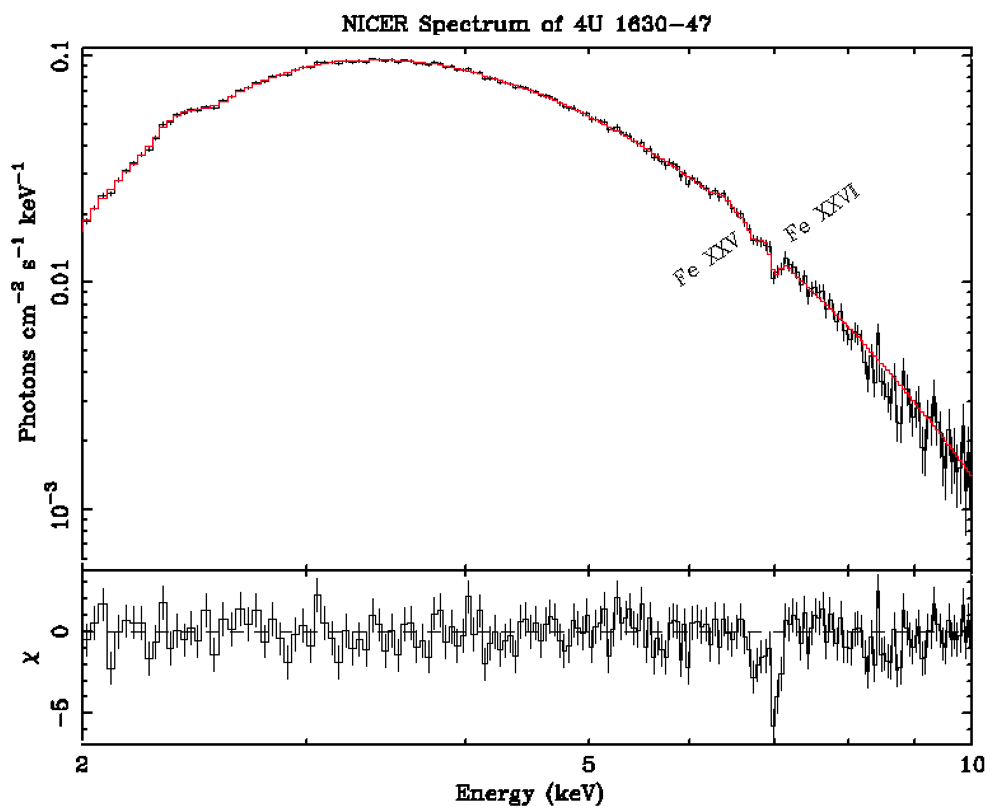NICER / ISS Science Nugget for June 28, 2018NICER observes 4U 1630-47, a black hole with frequent outburstsAs black hole transients go, 4U 1630-47 is both reliable and enigmatic. Since its discovery in 1969, 4U 1630-47 has gone into outburst more than twenty times, roughly once every 600-700 days (in contrast to famous sources like V404 Cyg and A0620-00, which can go decades between outbursts). Thus, it is an excellent case study for outbursts of a single object: what do they have in common, and in what ways are they different? One thing they seem to have in common is strong winds. Across outbursts, X-ray telescopes including Chandra, Suzaku, NuSTAR, and now NICER have all observed blue-shifted iron absorption lines (see accompanying figure): signatures of multimillion-degree outflowing gas. In brief, the infalling gas shines so brightly in X-rays that it pushes itself away (here moving at 1700 km/s) from the black hole. But there are differences and puzzles as well. Normal black hole outbursts go through a progression of "states," but 4U 1630-47 occasionally (including the current outburst), skips the early "hard" states and goes straight to the middle "soft" states, where winds are often seen. NICER can shed light on this behavior, which may be related to the unusually regular and frequent outbursts. Perhaps we will know more in 600 days.
This result was the subject of NICER's 11th Astronomer's Telegram, "NICER Observation of Strong Wind Absorption in the Soft Outburst of 4U 1630-47" (ATel #11771), by J. Neilsen et al. NICER
|



